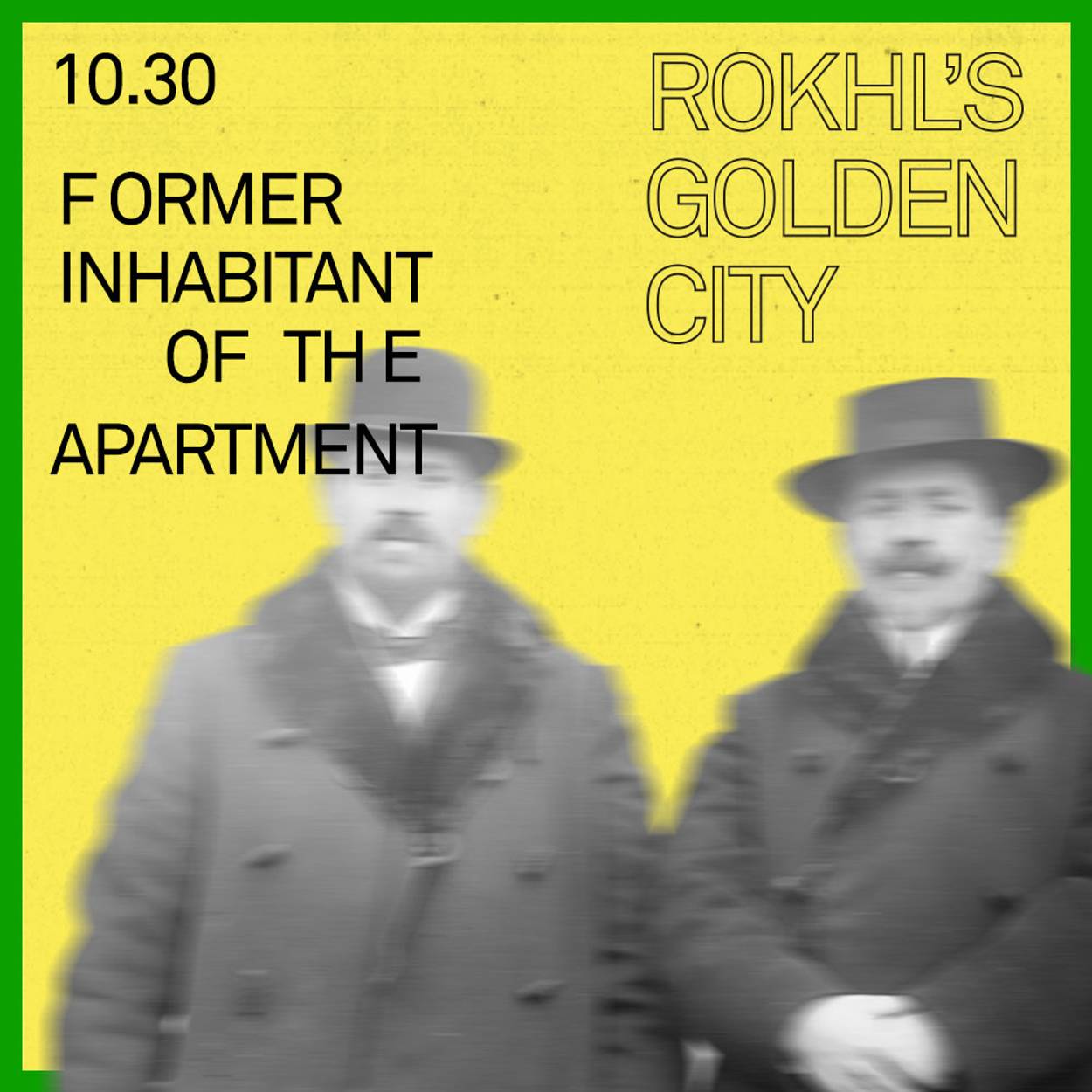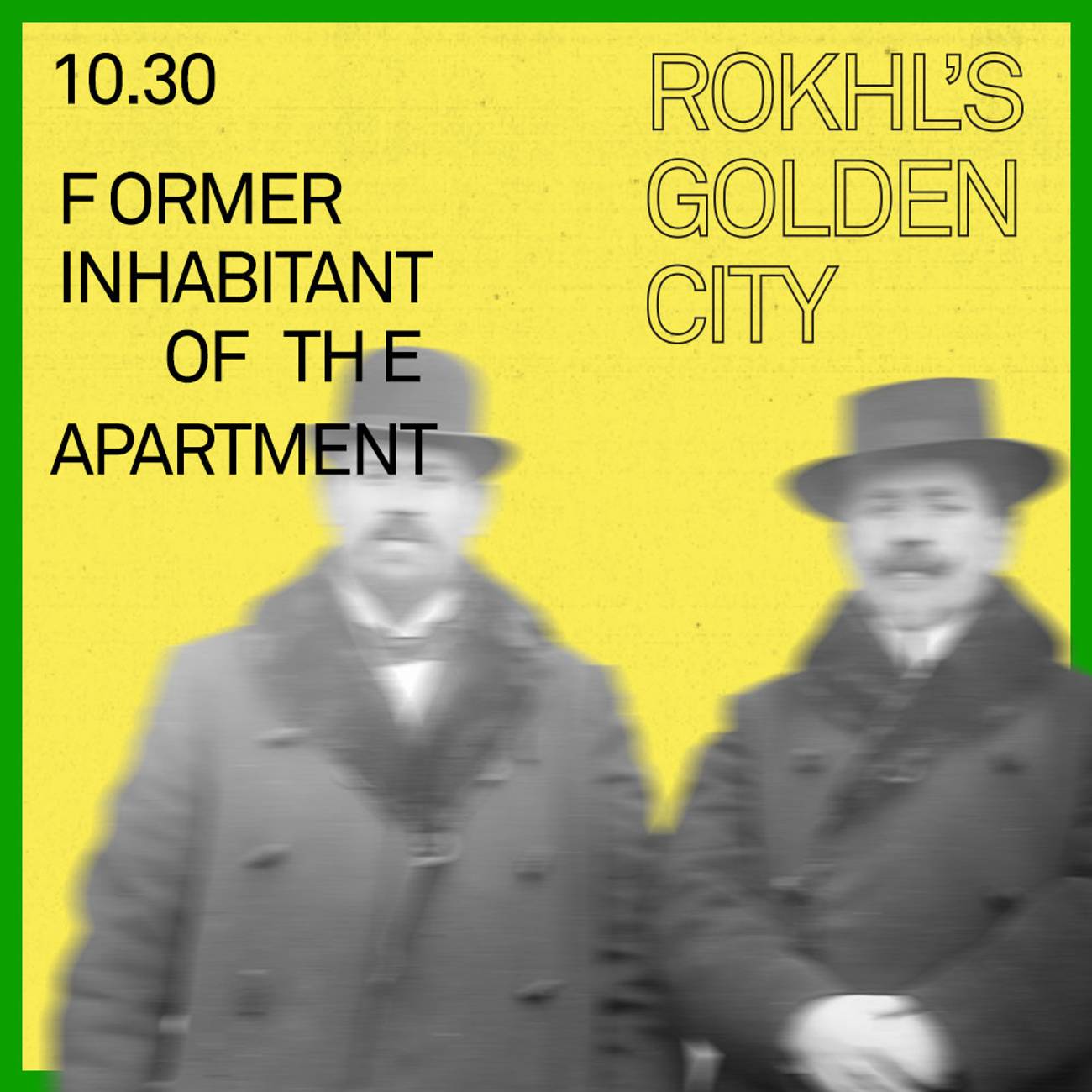Ghosts of the Ghetto
Rokhl’s Golden City: Who’s haunting Warsaw—and how?




There are Jewish ghosts in the former Warsaw Ghetto. It’s a statement so obvious as to approach banal. Before WWII, almost one-third of Warsaw’s population was Jewish, and its 350,000 Jews made it the second-largest Jewish city in the world. In 1945, there were an estimated 11,500 Jews left in the city. Ever since, the city has been haunted (metaphorically) by the sudden, extraordinarily violent (even for wartime), loss of a third of its population.
But sometimes the past is just too much to be contained within the bounds of rational language. Or so it seems. Take, for instance, a caller to a recent episode of a popular ghost story podcast. The Campfire happens to be a favorite of mine, especially when I’m trying to fall asleep. On this episode, a young (non-Jewish) man called in from Warsaw. He told the story of his old apartment in the area of the former Warsaw Ghetto. Over more than 10 years, he experienced classic symptoms of a haunting: lights being turned on and off, household items disappearing and reappearing, strange noises. At one point, he received a call on his cellphone that appeared to be coming from his own landline.
The caller began to suspect the entity was female. It wasn’t angry, per se, but resented his interference in her space. It often presented in the kitchen, where it made noises that were verified by visitors to the apartment. On one occasion, he came home late from work with a colleague. As they approached the apartment, they both caught the smells of baking in the hallway. When they got inside, they both heard something that sounded very much like someone beating cake batter in the kitchen. Checking the calendar, the caller realized that it was Rosh Hashanah. On another occasion, the caller said, he was making potato pancakes and stepped out of the apartment to get sour cream. Returning, he found some of the latkes missing, a fact verified by a friend who was with him.
Why was this ghost in this apartment? It’s hard to say. Unlike in the movies, most “hauntings” don’t have any kind of neat resolution, remaining more episodic than cathartic. Those who do serious investigations of hauntings will tell you that your home is your initial point of research—its construction as well as its history. Those strange voices you’re hearing are more likely to be the disconcerting hum of an unseen HVAC system than a family of ghosts. And few of the area’s structures were left standing after the war, making it highly unlikely this ghost was a former inhabitant of the apartment.
The pursuit of ghosts turns out to have quite a bit in common with the practice of genealogy. Family silences and gaps in official records can themselves create “ghosts” in the family tree. “[B]oth spectres and phantoms,” writes Helen Scholar in her article “The Ghost of the ‘Y’: Paternal DNA, Haunting and Genealogy,” “reveal themselves through breaks or deformations in language and text.” While many of Warsaw’s Jews spoke Polish, Warsaw was the capital of modern Yiddish culture, with flourishing literary, journalism, and theater sectors. The loss of Warsaw’s Jews necessarily implicates the loss of their language, too, creating the kind of cultural breakage from which ghosts of all kind can emerge.
I keep coming back to one detail in the caller’s story. He mentioned that he lived in the apartment while he was a student and then after, while working as an architect. The night he came back to find the entity baking the spectral honey cake, he and a colleague had returned to finish a work project at home.
At the end of WWII, 84% of Warsaw’s buildings had been damaged or destroyed. After the uprising in 1943, the Warsaw Ghetto itself was methodically disassembled by the Germans and bombed out of existence. New apartment buildings and other construction now sit four to five feet above the former street level. That new construction was built with, and on top of, the remains of the ghetto, including the human remains of many of Warsaw’s Jews.
Those seeking the Warsaw Ghetto will find few architectural traces. In a city that completely reinvented itself through architecture postwar, the ghetto today is an edifice of memory. “The place where the Ghetto used to be is empty,” as Barbara Engelking and Jacek Leociak have written. “The place survived, but was somehow hollowed out, deprived of contents, an interior. The Ghetto that was here was exterminated, but the ‘here’ remains … The framework remains within which a different reality is located; a topographical point remains, a cartographical abstraction.” The ghetto can be visited, but it requires the active participation of those who are seeking it. “What a visitor looking for the infrastructure of the Ghetto finds instead,” writes Benjamin Paloff, “is an outline of spaces that the willing participant is then called upon to fill in through imagination.” Perhaps the caller’s hungry ghost was simply bringing the architect’s attention to the neglected streetscape beneath his feet, establishing a recognition of coexistence, one that extended through both time and space.
Between the wars, Poland was home to a lively parapsychological research community. Alexander Imich was a part of that scene, extensively documenting the case of a medium called Matylda S. Imich and his wife survived the war, fleeing east. Afterward, they relocated to Manhattan’s Upper West Side, where Imich continued his psychical research. He apparently knew, at least to some degree, another former Warsaw resident now relocated to the Upper West Side: Isaac Bashevis Singer. In the introduction to his 1995 book, Incredible Tales of the Paranormal, Imich reveals that Bashevis had agreed to provide the preface to the book, but departed this earthly plane before the book was ready. I imagine the Upper West Side shared by Bashevis and Imich as its own ghostly topos, populated by Yiddish speakers and assorted eccentrics, draped lightly atop today’s million-dollar co-ops and box stores.
Though Bashevis never got to write that preface, I’m fairly certain that Imich (or at least his research) can be found in the work of Bashevis, specifically his later serialized novel, translated in the late 1990s as Shadows on the Hudson. I read Shadows when it first came out, and quite honestly, I hated it. I found it relentlessly grim and its protagonists’ womanizing unbearable. But coming back to it now, I found something more welcoming in its winter twilight tone and the struggles of its characters, caught between an idealized Warsaw of the past and the dirty cacophony of present-day New York. As Helen Scholar writes, “Hauntings are not just about the past but also … futures that might have been or might still be.”
Imich devoted a chapter of Incredible Tales to the story of Matylda S. Describing her ability to summon spirits, he wrote, “I will never forget the kiss of a phantom. An invisible face, whose breath I could distinctly hear and feel on my face, kissed mine. It was a strong and pleasant sensation.”
The image is strongly reminiscent of a key scene in Shadows on the Hudson. The character of David Shrage had been a paranormal researcher in Warsaw. He traveled to New York to continue that research and in doing so, managed to escape the war. However, he spent the war years in New York, tormented by uncertainty about the fate of his wife, Edzhe.
Shrage brings his old friend Stanislaw Luria to a séance conducted by his benefactor and landlady, Mrs. Clark. Both men are promised that their deceased wives will appear in semisolid form, though the closest they will get is a breath, a sound, a fleeting kiss. The séance, of course, is a fraud. The dead wives are “performed” by a Polish Jewish actress hungry for the life of the stage, the life she enjoyed in Warsaw. What is undeniable is that all four actors in the séance are communing with their own ghosts, all four seeking to perform their own exorcism of the past.
In the postwar era, not all who saw ghosts were seeking them. The journalist Aaron Zeitlin collected stories of Yiddish-speaking Jews who had experienced visions of loved ones who had died, what I would call “crisis apparitions.” Zeitlin wrote two books in Hebrew about these visions (and more). In a recent article, journalist Ofri Ilany quotes one of Zeitlin’s books: “Who knows and who can say how many shouts of horror were sent to America during the Holocaust by the spiritual telegraph? Any number of sensitive people received them; the rest did not receive: The voice of the American mass spoiled their reception station.” He echoes professor Shrage of Shadows on the Hudson, who at one point says to himself about New York, “How could spirits exist in the midst of such bacchanalia? Souls, too, needed the proper ambiance.”
It’s easy to get caught up with the recriminations of one’s own present moment. But each profane present moment will no doubt be some future person’s keenly sought holy past. We can chuckle at Zeitlin’s profile of “a rabbi from Jerusalem who was able to detect, by means of his olfactory sense, the presence of a person who had recently masturbated.” But Zeitlin understood the “spiritual dimension of the sense of smell, between re’ah and ruah—Hebrew for scent and spirit.” I recently bought a lip gloss on the promise that its fake cherry flavoring would smell like my past, and, indeed it did, conjuring an 8-year-old me from the very depths of my sense memory brain. The presence in that Warsaw podcast caller’s apartment set a trail with the smell of baking cake, leading him to finally look at a Jewish calendar, thus bringing her frame of reference into his present. While spirits may not always be able to speak to us above the din of daily life, that certainly does not mean they aren’t talking to us.
FOLLOW UP: In my recent column on conspiracies and blood libels, I cited the excellent work of Elissa Bemporad. You can now listen to her recent talk for the UCLA Center for Jewish Studies, “The Blood Libel in Modern Eastern Europe: A Social History.” … In my July column on Jews and demonstrations, I mentioned Scott Seligman’s new book, The Great Kosher Meat War of 1902. He’ll be giving a book talk for the Center for Jewish History on Dec. 4. Tickets here.
ALSO: On Nov. 4, you can attend the Center for Jewish History’s workshop on how to use facial recognition technology on photos of unnamed ancestors … LA’s Yiddishkayt is celebrating its 25th anniversary. On Nov. 15, join Yiddishkayt founder Aaron Paley and the multitalented musician and teacher Michael Alpert for a conversation about all things Yiddish and Los Angeles … Schmaltzy is a new Jewish food podcast talking to the people behind the food … My friend Caraid O’Brien has an amazing new project. She has translated the memoir of 1905 revolutionary Klara Klebanova and she voices the story for a new 12-part podcast for the Yiddish Book Center called The Last Maximalist … Two of the biggest wintertime Yiddish festivals have announced their dates. Yiddish New York will go ahead online, Dec. 26-30, and Shtetl Neukolln/Shtetl Berlin will be happening online, Dec. 11-13. I’m distraught at the reason why, but this year’s circumstances mean anyone who wants to can be in both New York and Berlin.
Rokhl Kafrissen is a New York-based cultural critic and playwright.